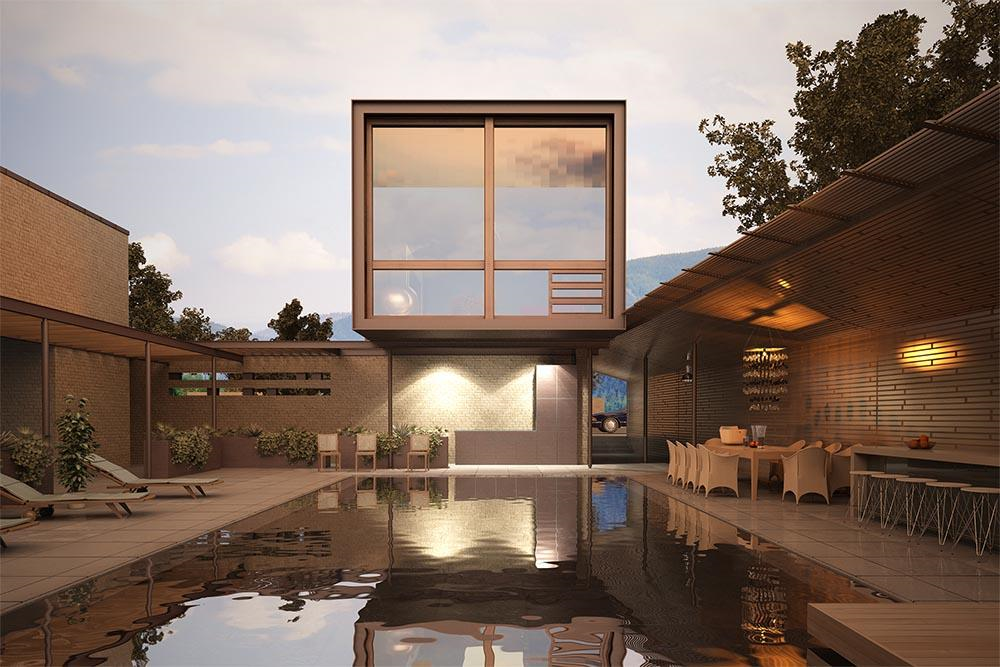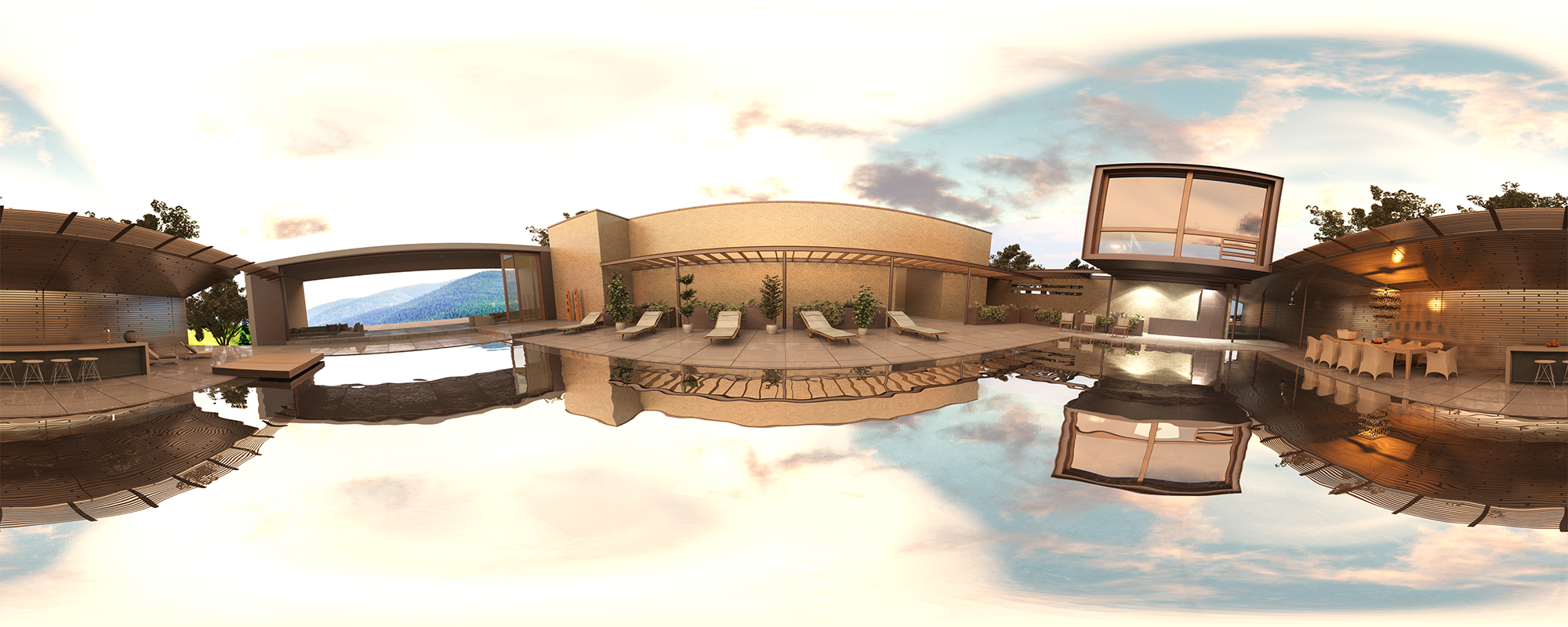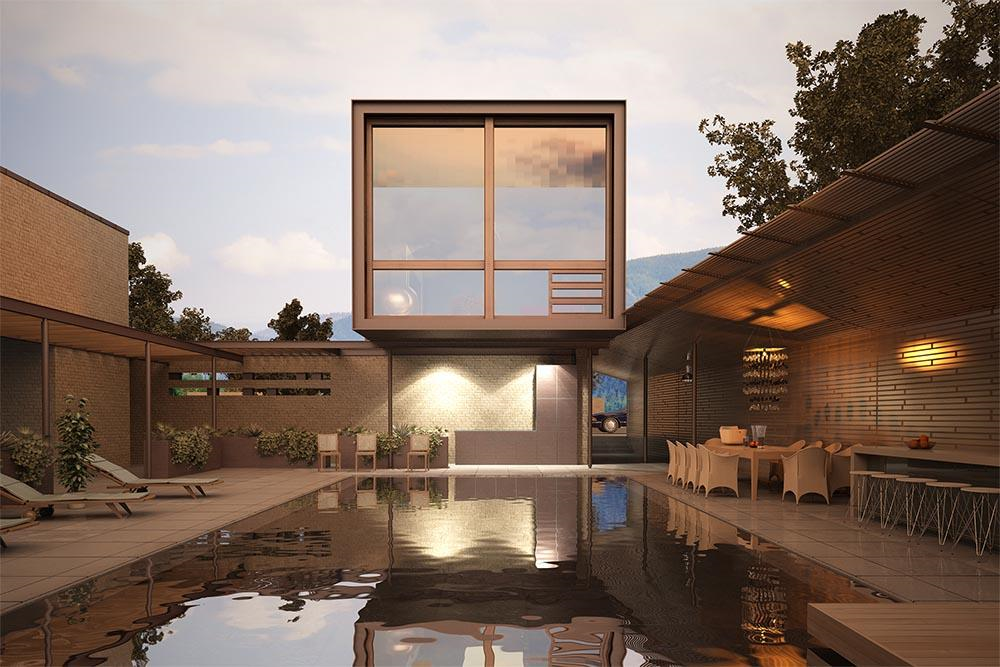There are many educational projects where the use of virtual reality technologies is the basis of new educational dynamics. However, there does not seem to be a clear validation in architecture and design.
Within the practice of architecture and design, the simulation of space or reality requires elements that will make the spectator who is undergoing the experience feel as though he or she is present or immersed in a space. Printed virtual representations, commonly known as renders, require functional elements such as realism, abstraction and precision, together with fidelity in lighting, color, materials and vegetation. In addition, there are intangible elements in architecture and design that seek to convey to and generate in spectators the generation of enjoyment, pleasure or attractiveness, among others. At present, all these elements can be included with new representation formats that combine Virtual Reality (VR), Augmented Reality (AR) and 360° Stereoscopy displayed on a Head-Mounted Device (HMD).
In 2012, one of the companies that would become a benchmark in the world of virtual reality, Oculus®, was founded and changed the way we now visualize the digital world. This tool makes it possible to display a range of elements, from social network content to a complex videogame on one of its various RV devices. But, what purpose could technological advances serve in the classroom? There are highly interesting educational projects in which virtual reality forms the basis of new educational dynamics in the classroom, such as at St. Lucie School in Florida that offers professional and technical education where students can dissect a human body, weld a beam and/or take a car apart. They can also carry out these activities individually or as a team through technological tools such as zSpace (McMahon, 2018).
data-animation-override>
“There are highly interesting educational projects in which Virtual Reality forms the basis of new educational dynamics in the classroom. For example, students can dissect a human body, weld a beam or take a car apart.”
Virtual reality is also applied in social projects, such as the “I Chicken” experiment conducted by PETA (People for the Ethical Treatment of Animals) and Stanford University’s Virtual Human Interaction Lab. This project shows how virtual reality can be used as a creative tool to create awareness and empathy for different causes (The Creative Cloud Team, 2017).
There are also virtual reality programs, such as Google Expeditions, which offer virtual tours of physical locations, for example, the Egyptian pyramids, Mount Everest or the planet Mars. These virtual tours can be used in a variety of educational contexts to teach history, mathematics or geography, among many other academic areas (Google developers, 2016).
Despite the diverse applications of VR technology in the field of architecture and design, there does not seem to be a clear, extensive validation on the use or replacement of other visualization formats. This is why, as a research professor, I implemented a research project, which emerged from the idea of being able to use innovative VR devices in architecture teaching practice, in student and/or professional life. In order to support the tests, in conjunction with other professors, we set about investigating the elements that could underpin a quantitative and qualitative comparison.
The following is an overview of this contribution (the complete study can be downloaded here). Our research focused on answering the following: Which of the formats used with the participants (architects and non-architects) is more disruptive holistically: printed paper (render) or HMD? This question was the starting point for introducing aspects or elements that contribute to building the perception of a better visualization format, because of either: representation effectiveness, realism, abstraction, precision, and light, color and material fidelity, or the ability to generate an emotional change and, finally, the attractiveness for the discipline.
data-animation-override>
“Despite the diverse applications of Virtual Reality in the field of architecture and design, there does not seem to be a clear, extensive validation on the use or replacement of other visualization formats.”
Image 1. 360° render for visualization in the Samsung Gear device. Photo: Mario Pistoni Pérez
The study generated a series of interesting findings on perception using the printed render and the Samsung Gear device, achieved by comparing the perception of 40 participants who were divided into two groups. Differences were mostly observed in the elements evaluated that are of practical use for architects. In general, the Samsung Gear 360 ° format came out better in the evaluation, with a favorable assessment for 74% of the elements or aspects. However, in a deeper analysis, separating the impressions of the 20 architects, it can be seen that 360 ° is evaluated in only 54% of the elements, demonstrating that architects are still deeply attached to certain elements which they prefer to perceive through the printed format. This finding led to a discussion among the work team and we called it “a feeling of nostalgia”, since a printed image and a screen can obviously be perceived better on a device that emits light and color.
Image 2. Printed render for visualization in a double-letter-size format. Photo: Mario Pistoni Pérez
These results were presented at the International Mechanical Engineering Congress & Exposition®, a forum where experts in the field can obtain comprehensive feedback on research. The experience was positive, since our work was exposed to professors and doctoral students from diverse universities in Japan, China, the United Kingdom and the United States. The subtlety and obviousness of the advantage of HMD over conventional formats was discussed, but since this was the first development in the investigation, further details are required to disseminate these practices in the industry and have a real impact on the architecture or design practices.
Finally, my main interest in disseminating these practices is to invite teachers to become familiar with the tools that are available to us and that have enormous potential in training professionals. Please do not be afraid of the new technology on the market, but explore and adopt it, analyzing its true potential. Remember that you are not alone. You can also work in a multidisciplinary team to discover the technology that is already available to everyone.
About the author
Juan Carlos Rojas López (jcrojasl@itesm.mx), who holds a Ph.D. in Design, Manufacturing and Project Management is a professor at the School of Architecture Art and Design of Tecnológico de Monterrey. He specializes in the emotional and affective evaluation of design through subjective and objective measurement methods and tools.
This article from Observatory of the Institute for the Future of Education may be shared under the terms of the license CC BY-NC-SA 4.0 
)
)




)